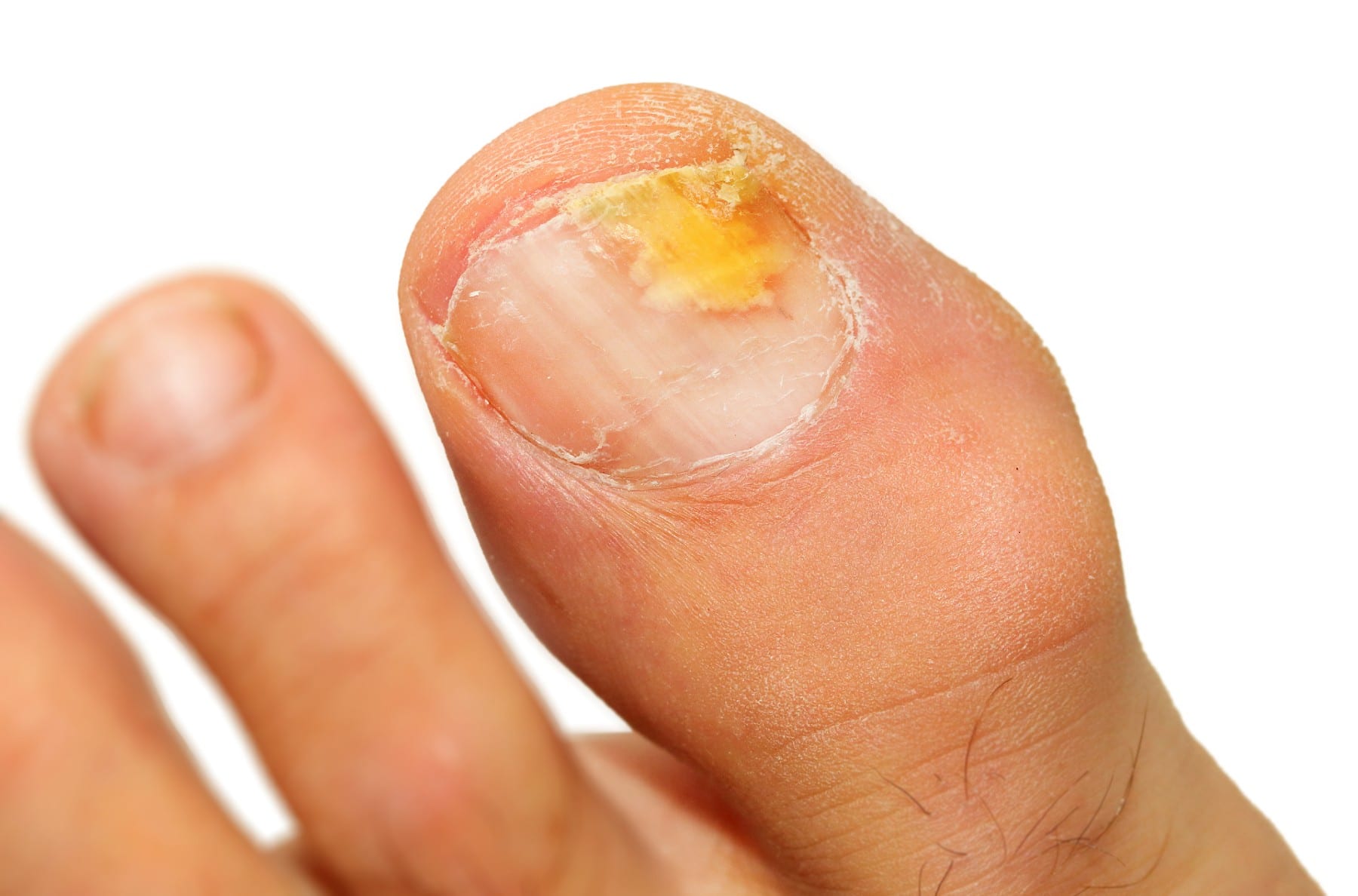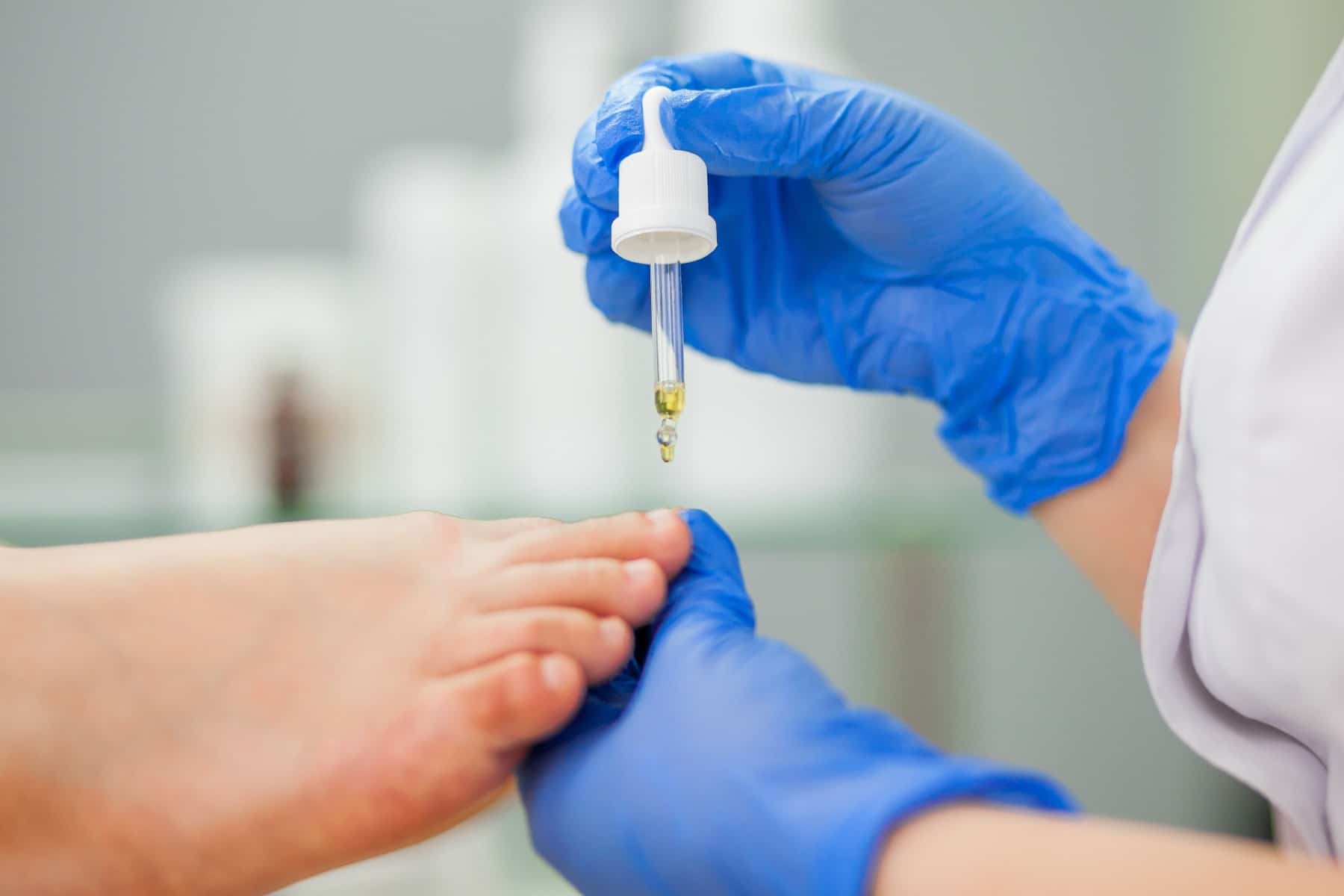Fungal Toenails
Fungal toenails can be an extremely frustrating and stubborn problem to deal with. While they rarely cause physical pain, they can be a great source of embarrassment. Plus, they never go away on their own, and successful treatment requires time and discipline.
However, that does not mean you should put up with them forever! The team at Capital Podiatry Associates can set you (and keep you) on the path back to clear, healthy toenails once again. With a little bit of patience, you can return to enjoying open-toed shoes with confidence!
Do You Have Fungal Toenails?
Telltale symptoms of the condition include:
- Nail discoloration. This typically starts out as small white spots or streaks under the tip of the nail, but eventually results in yellowish or brownish discoloration across a large portion.
- Changes in shape. Fungal toenails are usually thickened, and may develop a ridged or distorted shape.
- Changes in texture. Nails are often brittle, crumbly, or ragged along the edge.
The diagnosis can typically be made based on a simple visual inspection. In some cases, we may take a sample of your nail for laboratory testing to identify the specific type of fungus present, or rule out conditions that can produce similar symptoms.
How to Get Rid of Fungal Toenails?
As we mentioned above, fungal toenails do not go away on their own. They also do not respond to any home remedies you might consider. The only way to have a good chance of getting your clear toenails back is by seeking professional treatment.
Oral antifungal medications are the most popular treatment option, with the longest track record of success and the most independent research backing up its efficacy. A typical treatment course lasts between 6 and 12 weeks. However, they may not be appropriate for everyone.
Topical antifungal treatments may be considered either in addition to oral medication, or as an alternative for those who are unable to take oral antifungals safely. You’ll need to regularly thin your nails to allow the medication a better chance to soak through the nail and target the fungi within and below.
It’s important to understand that results are not instantaneous. Even once the fungus is eradicated, new healthy nail tissue must still grow in and replace the portion that has been damaged. This process may take from several months up to more than a year. However, most people who are patient and follow the treatment course exactly as prescribed achieve significant improvement in the condition of their nails.
It’s also important to note that, like other related infections (such as athlete’s foot), there’s no permanent “cure” for fungal toenails. Once treatment is complete, you must still take proper preventative measures to avoid a later re-infection. Simple steps you can take include:
- Washing your feet with soap and water every day
- Not walking barefoot in public locations
- Not sharing nail and skin care tools, socks, shoes, etc. with anyone else
- Changing socks and shoes if they become damp, and alternating pairs of shoes at least every other day
- Using antifungal powders or sprays in shoes daily
Avoiding spas and nail salons with insufficient standards of sterilization. (Choose our spa instead!)
Comprehensive Fungal Toenail Treatment in the DC Area
You want your toenails to be clear and healthy, so that you can feel confident and make a great impression in any kind of footwear. We can help you with that!
To request your appointment with the team at Capital Podiatry Associates, give us a call at (703) 560-3773 or contact us online.

